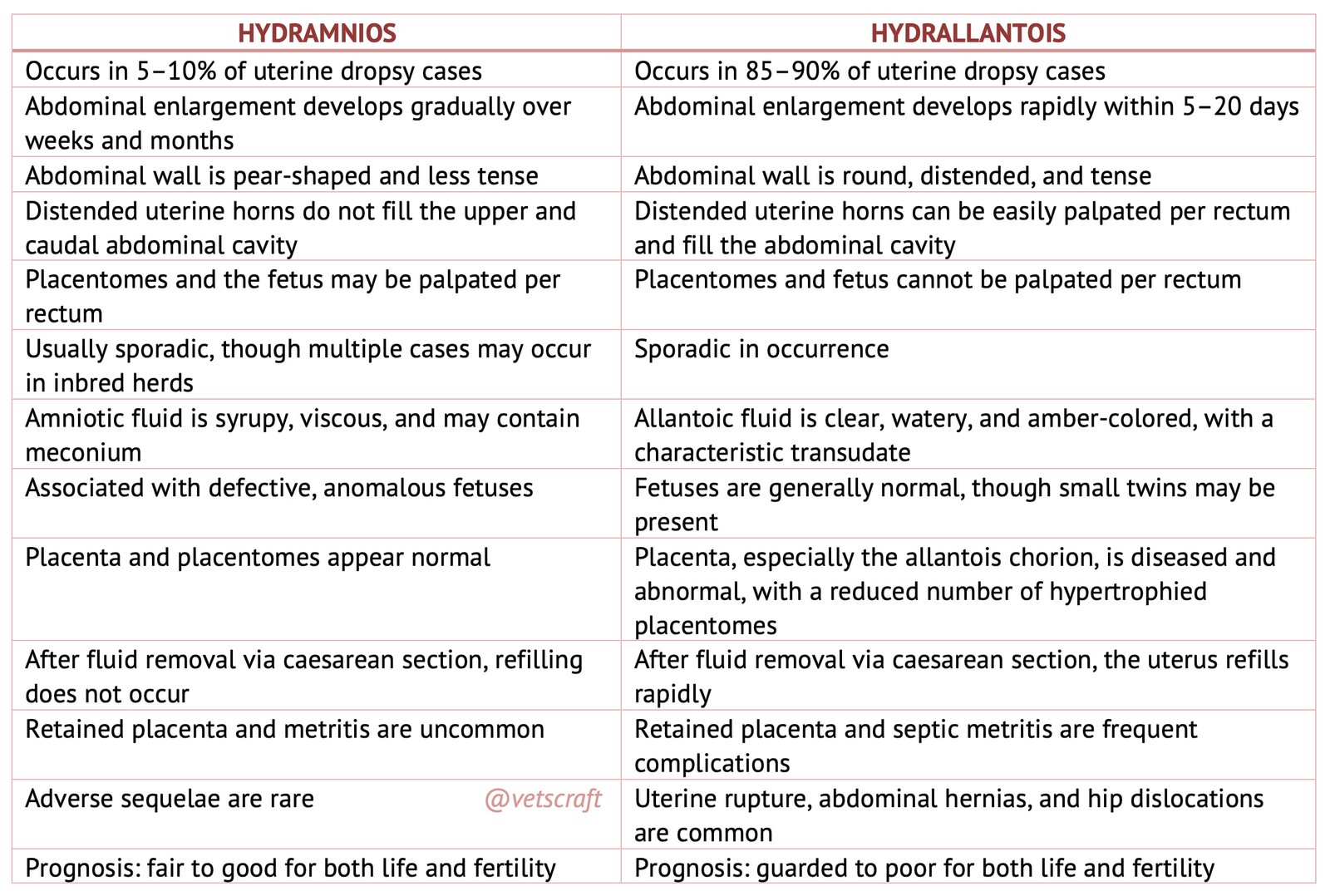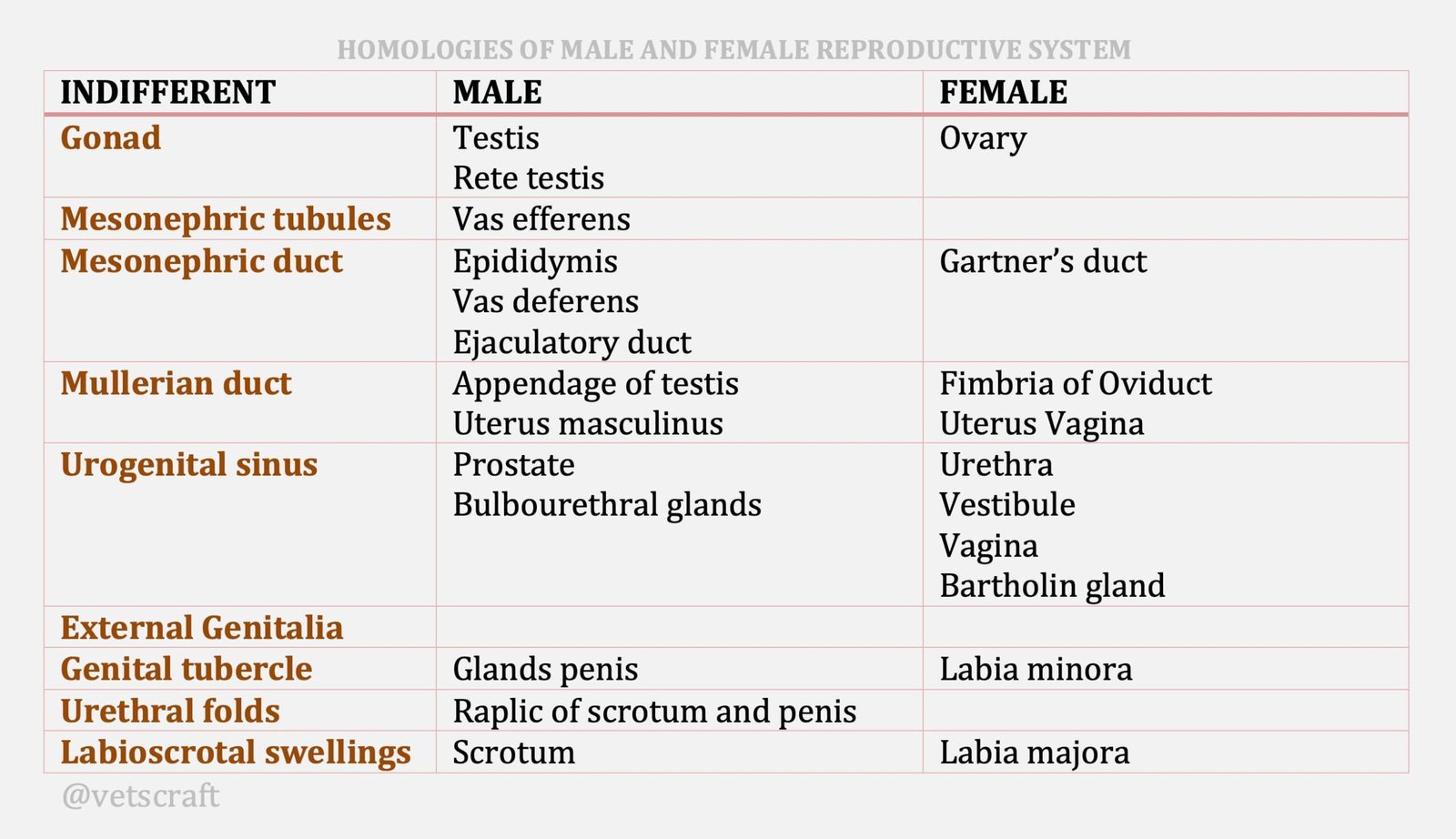TABLE OF CONTENTS
Hydramnios
Hydramnios is defined as excess accumulation of amniotic fluid in the amniotic cavity. It is characterized by a gradual enlargement of the amniotic cavity that is associated with a genetic or congenitally defective fetus.
Species Affected
Most commonly in cattle; but rarely seen in sheep, pigs and carnivores. It has not been reported in horses.
Etiology and Pathogenesis
At mid-gestation the amniotic fluids is watery and slightly yellow in color. From midgestation onward the amniotic fluid becomes more viscid and glairy because the early watery fluid is swallowed or inhaled into the large bronchi and absorbed and a large volume of Saliva is continually produced. In this way the volume of amniotic fluid remains static after mid gestation.
Since this condition is associated with defective fetus, the swallowing is impaired and the amounts or amniotic fluid increases gradually to 20 to 120 litres. The normal volume of amniotic fluid is 4-8 litres.
Genetic or hereditary conditions resulting in defective foetuses often associated with hydramnios are:
- Dexter cattle pregnant with “bull dog”calves.
- Angus cattle pregnant with brachygnathic fetus.
- A muscle contracture monster fetus in Red–Danish cattle.
- Pituitary hypoplasia or aplasia in prolonged gestation in Guernsey cattle.
- Hydrocephalus fetus in Hereford cattle.
All the above defects are due to recessive autosomal genes:
- Congenitally defective foetuses such as conjoined twin monsters, Schistosomus reflexus cause hydramnios.
- Hybrids produced by mating of an American bison bull with a domestic cow resulted in hydrops of amnion.
- Anencephaly is frequently the cause of hydramnios in humans.
Symptoms
- All cows in which twins are suspected should be examined promptly for dropsical condition.
- Hydramnios develops slowly over several months during the latter half of gestation.
- In last month or the last six weeks of pregnancy the conditions causes obvious abdominal enlargement.
- Often the condition is not recognized until parturition when large quantities of syrupy, viscid, amniotic fluid occasionally containing muconium is released.
- Abdominal wall is pear-shaped and less tense.
- In rectal examination uterine horns hard to palpate, not very tense. Placentomes and the fetus may be palpated per rectum.
Prognosis
The prognosis for the future breeding life of the dam is fair to good but the fetus is defective and dies.
- Abortions and premature parturitions are frequent in hydramnios.
- Because of the enlarged uterus, uterine inertia and defective fetus dystocia may occur at parturition.
- The genetic implication in salvaging an affected dam should be considered. If the defective fetus and hydramnios is due to recessive character then the dam and sire are carriers. Such animals should be eliminated from the herd and any inbreeding in the herd should be discouraged.
Treatment
- At the time of premature parturition or normal parturition with hydramnion, dystocia if any should be corrected and the fetus is relieved.
- In closed cervix, after confirming the condition, parturition is induced with prostaglandin F2α or corticosteroids or both.
- If medical means fail, caesarean section is indicated.
- Before and after relieving the fetus by vaginal delivery or caesarean section, fluid therapy, antibiotics, antihistaminics and corticosteroids are administered.
Difference between Hydramnios and Hydrallantois


